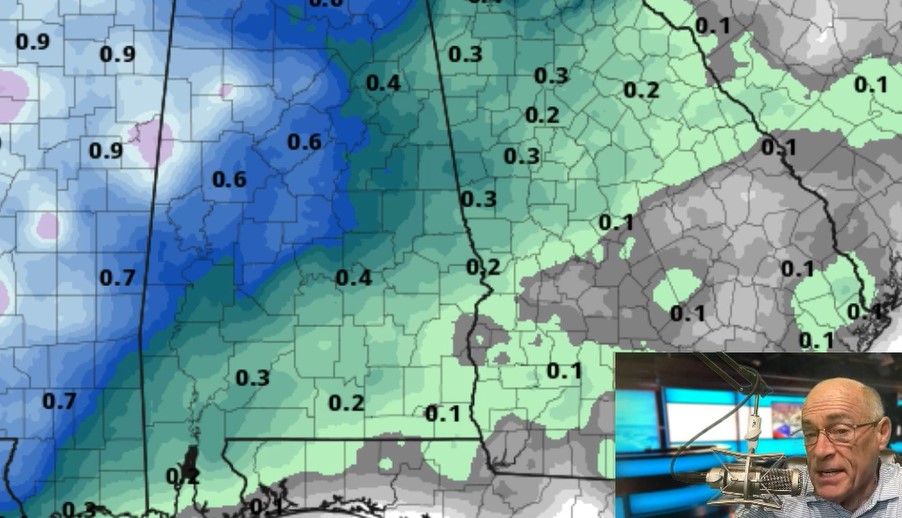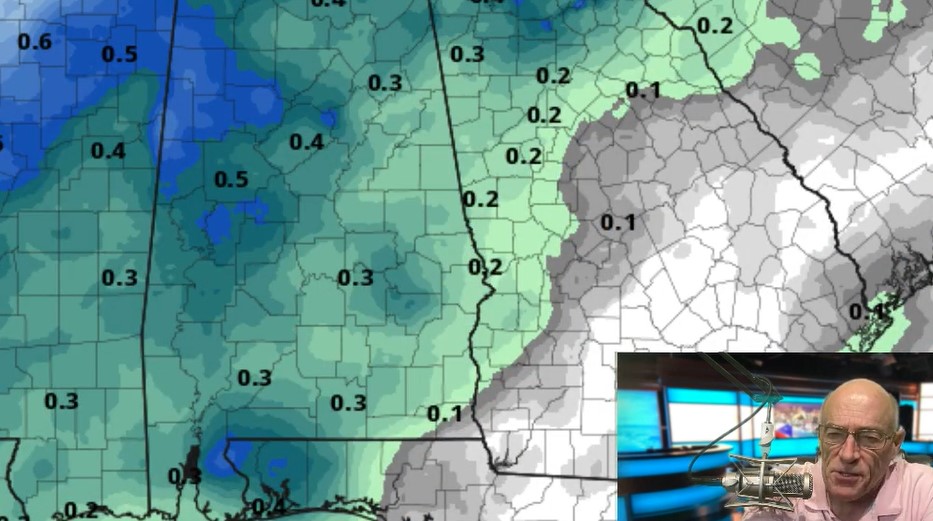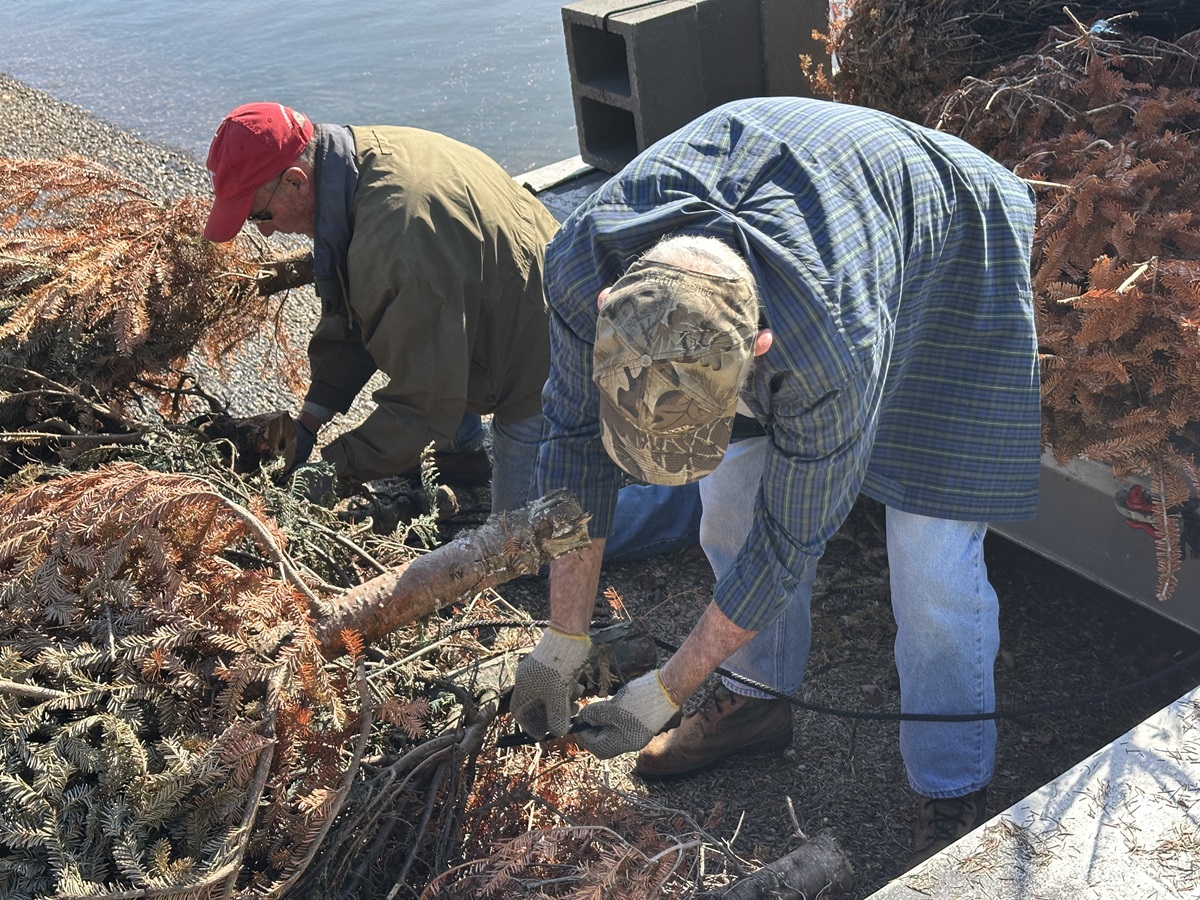Efforts continue at Alabama Power’s Lake Mitchell to protect, expand rare woodpecker population

They are still rare, but the red-cockaded woodpecker is making a slow but steady comeback in Alabama and across the Southeast. (Alabama News Center)
It’s a breezy spring day on a small island on Alabama Power’s Lake Mitchell, and two company biologists are baby-sitting.
With the aid of a special camera attached to a high pole, biologists Dylan Shaw and Colin Dinken are peeking into the nesting cavities of federally protected red-cockaded woodpeckers.
The cavities are about 20 feet up, nestled into the soft “heart” wood of longleaf pine trees – also a rarity across much of the South.
Once the dominant forest species from Virginia to Texas, longleaf has been reduced to a fraction of its original territory over the past two centuries as human development spread across the region. The red-cockaded woodpecker also has suffered because it, and many other species, rely on longleaf habitat for their survival.
But in recent years, both the longleaf and the red-cockaded woodpecker are making a slow but steady comeback, thanks to the joint efforts of federal and state agencies, private landowners, nonprofits and charitable foundations, corporations and scores of individuals, researchers and scientists. Alabama Power and parent Southern Company are among those who are actively involved in initiatives to preserve and expand longleaf forests, and protect the animals that thrive in them, including the red-cockaded woodpecker.
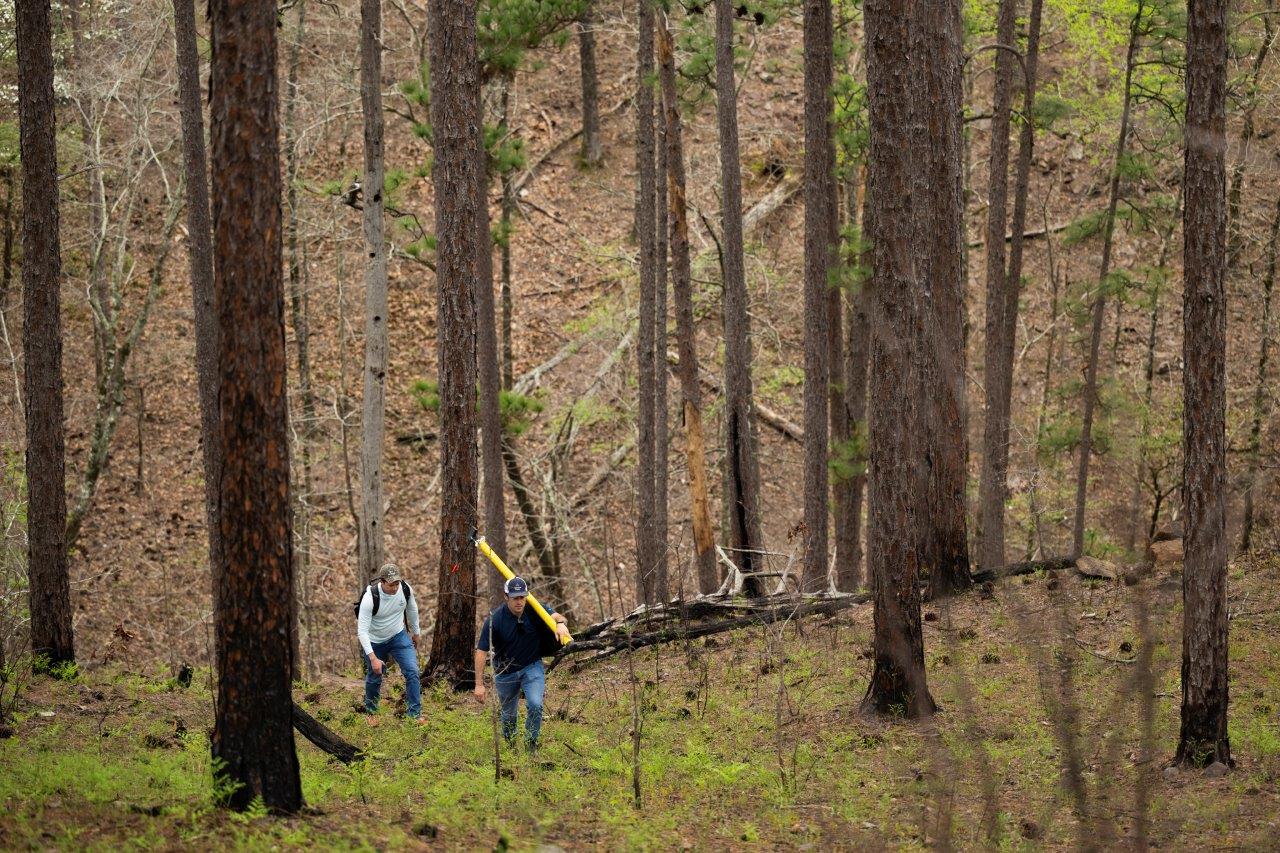
Alabama Power biologists Dylan Shaw and Colin Dinken move through the longleaf pine forest near Lake Mitchell to check red-cockaded woodpecker cavities. (Phil Free / Alabama News Center)
Lake Mitchell is one place where the bird’s numbers are slowly rising. Since the 1980s, Alabama Power has worked closely with the U.S. Fish and Wildlife Service and the Alabama Department of Conservation and Natural Resources (ADCNR) to manage more than 1,600 acres of old-growth longleaf in the vicinity of the reservoir. The forest is now home to 11 clusters (families) of red-cockaded woodpeckers, a number that has grown in recent years.
April is typically when the woodpeckers lay their eggs in this region. Using a “peeper scope” – a specialized camera atop an extended wand, with a screen down below at ground level – Shaw and Dinken were able to glance into the nesting cavities to check for signs of activity. A few weeks from now, hopefully, those nests will contain eggs. At this time of the year, the biologists try to come around to check on the nests about once a week.
On this one day in late March, early into the nesting season, no eggs were found in the 20 cavities that Shaw and Dinken were able to check. The two did discover a pair of flying squirrels that had made themselves comfortable in one bird-free cavity.
When eggs and then hatchlings are found, the team will continue to monitor their activity. Before the birds fledge (develop wing feathers) and fly off, the Alabama Power team will often invite state and federal experts to come in and tag the babies with colored bands that are carefully attached to one tiny ankle. The unique bands give biologists the ability to capture the birds later and track their progress over the coming years. Tagging does not take place every year.
Another way Alabama Power helps to maintain longleaf pine forests on its land holdings is through occasional, prescribed burns, which remove layers of vegetation from the ground, allowing a multitude of important grasses and wildflowers to flourish. A healthy longleaf forest also serves as home to a vast array of animals and insects, from snakes to quail and turkey, to butterflies.
Alabama Power biologists work with state and federal wildlife experts to help monitor and expand the populations of other rare or protected species across the state. They include a tiny freshwater fish, the rush darter; other aquatic animals including the rough hornsnail, Black Warrior waterdog, tulotoma snail and flattened musk turtle; and the land-burrowing gopher tortoise.
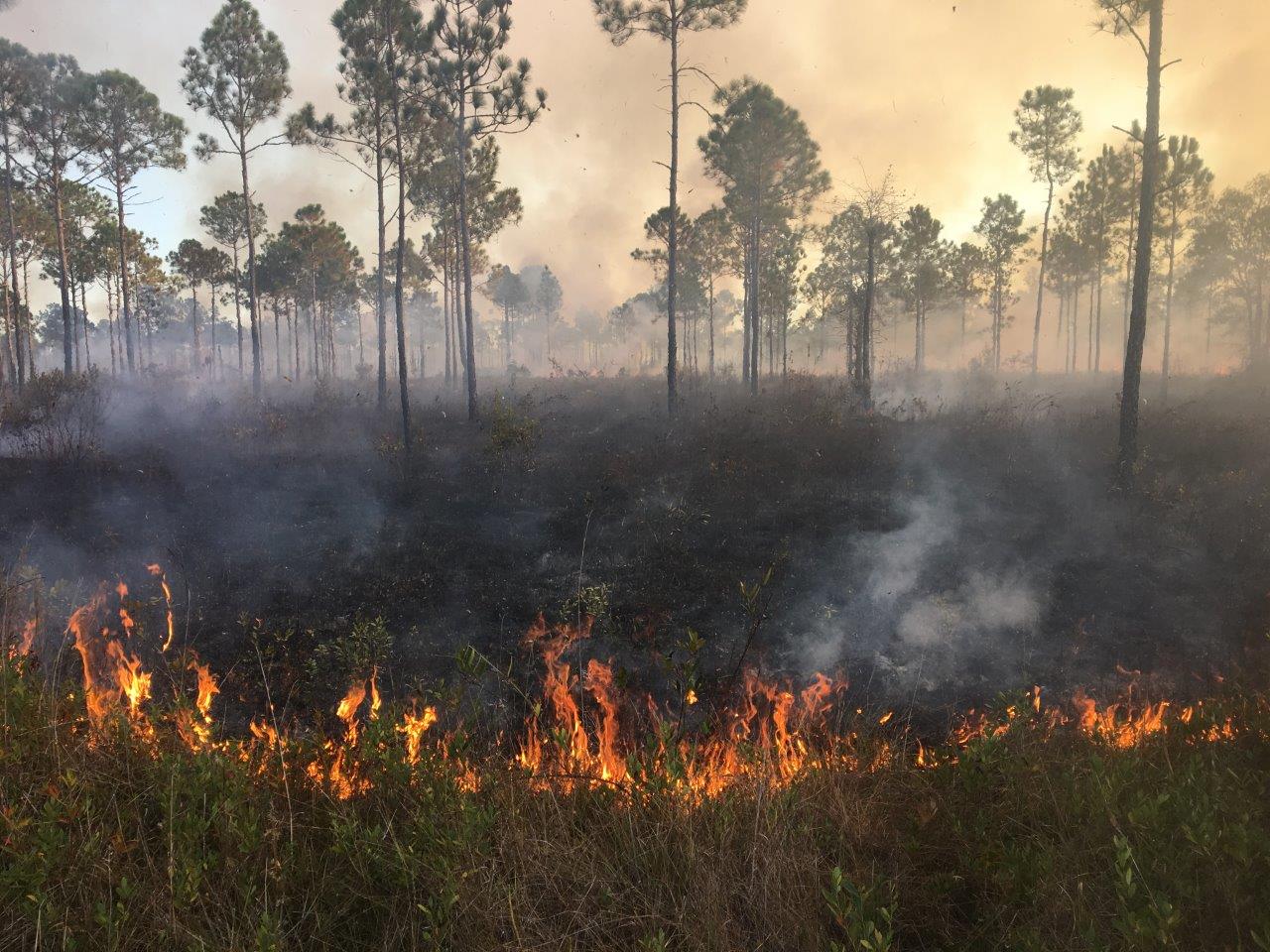
Carefully controlled, prescribed fires help longleaf pine forests thrive. (contributed)
“Alabama Power has been enhancing longleaf pine habitat for red-cockaded woodpeckers for nearly 30 years,” said Susan Comensky, the company’s vice president of Environmental Affairs. “We are proud to protect the plants and animals that call Alabama home.”
To learn more about Alabama Power’s ongoing environmental stewardship efforts, click here.









